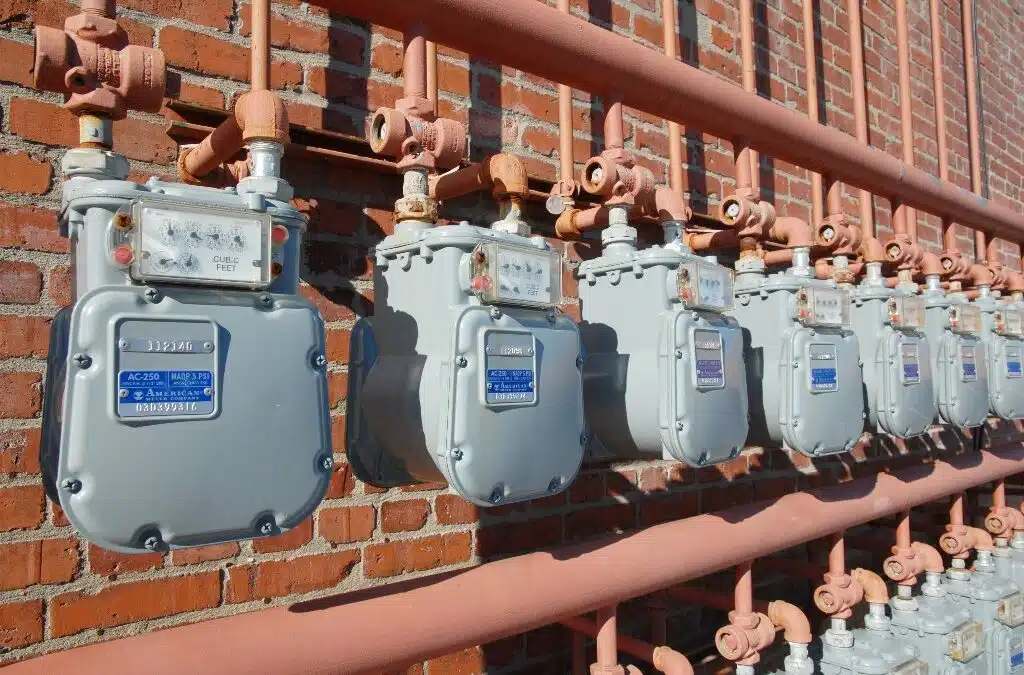As world leaders convene in Glasgow to for the twenty sixth round of climate talks (COP26), many people across the globe are thinking about what they can do to reduce their greenhouse gas emissions. These emissions, consisting largely of carbon dioxide, methane and nitrous oxide, trap heat in the atmosphere and warm the planet. It’s a trending but complex topic. I’ll focus only on the subject of natural gas leaks.
Natural gas is a fossil derived energy consisting mostly of methane gas. It has numerous commercial applications and is a popular fuel for residential heating and cooking. It was first used in the United States in the early 1800s. Today over 67 million US homes and more than 5 million businesses are served with natural gas. In a word, it’s ubiquitous.
And so are gas leaks.
It is no surprise that a system serving so many businesses, with so many miles of pipelines/pipe and so many connections, would leak. After all, water lines leak constantly. The New York City water system is estimated to leak between 15 and 35 million gallons daily! Gas lines are also subject to leaking, though those leaks as less visible and more difficult to detect and fix.
So, what’s the big deal you ask? It’s still very safe. Building explosions and fires are relatively rare. It boils down to the potency of methane gas. Methane traps 86 times more heat in the atmosphere than carbon dioxide. In fact, nearly 20% of the planet’s warming can be attributed to methane. More to the point, the methane problem is not one that exists only at some refinery or pipeline. It exists in your town, maybe even your street.
In Massachusetts we have a law that requires utilities to report gas leaks to the Department of Public Utilities. Leaks are classified in three basic categories, Levels 1 through 3. Level 1 leaks present immediate risks to the community and must be fixed as soon as possible. The other two categories are deemed less urgent and, in many cases, can be left unrepaired if properly monitored. Data shows that many Level 3 leaks remain unrepaired, year after year. My town had 151 reported but unrepaired leaks at the end of 2020.
Based on gas leak reports provided to the state by local utilities, over 11,500 metric tons of methane were released through leaks in Massachusetts last year. Since this figure represents only known leaks, the actual number is estimated to be 2x to 3x higher. What does that mean?
-
- The reported figure alone is equivalent to the greenhouse gas emissions (CO2) of burning 32 million gallons of gasoline.
- It equates to over 62 thousand passenger cars being driven for a year.
And these are the data from only one state. The nationwide methane leaking problem is enormous . . . and largely unrecognized. So, while you may balk at the future lifestyle changes proposed by some climate experts, don’t dismiss the challenge of fixing the gas system that services your community and your lifestyle today. The problem of leaks may be closer than you think. In my case, there is a leak less than a quarter mile from my house. It was first reported in August of 2019. It is still leaking.
See Also These Links:
https://www.epa.gov/energy/greenhouse-gas-equivalencies-calculator
https://www.edf.org/climate/methanemaps

Peter has spent the past twenty-plus years as an acting/consulting CFO for a number of small businesses in a wide range of industries. Peter’s prior experience is that of a serial entrepreneur, managing various start-up and turnaround projects. He is a co-founder of Keurig.


